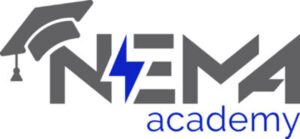NEMA Academy to Reshape Industry Education by Craig DiLouie
 For 25 years, the Lighting Controls Association, a council of the National Electrical Manufacturers Association (NEMA), has educated the building industry about lighting control technology and application, notably through its Education Express courses. The organization is proud to announce that starting May 1, 2025, the Education Express curriculum will be incorporated into a new learning management system, NEMA Academy. The new platform will feature an improved website, a comprehensive learning platform, and access to a broad and growing curriculum covering lighting controls in addition to other topics, from lighting to safety to emergency preparedness. NEMA Academy to Reshape Industry Education
For 25 years, the Lighting Controls Association, a council of the National Electrical Manufacturers Association (NEMA), has educated the building industry about lighting control technology and application, notably through its Education Express courses. The organization is proud to announce that starting May 1, 2025, the Education Express curriculum will be incorporated into a new learning management system, NEMA Academy. The new platform will feature an improved website, a comprehensive learning platform, and access to a broad and growing curriculum covering lighting controls in addition to other topics, from lighting to safety to emergency preparedness. NEMA Academy to Reshape Industry Education


